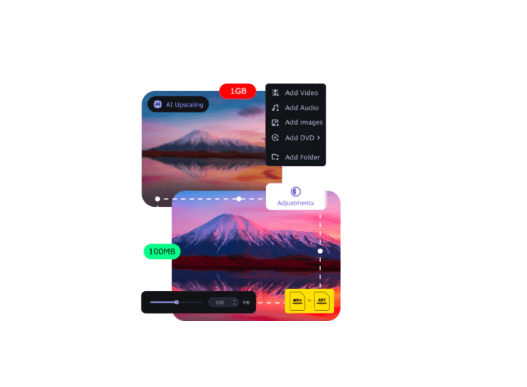DevOps vs Agile: A Comprehensive Guide for Business Leaders
Companies that implement DevOps practices experience 60% faster time-to-market and 30 times more frequent deployments, whereas Agile adoption leads to a 28% increase in productivity and a 50% reduction in defects.
But here’s the million-dollar question: Which approach is right for your business? DevOps? Agile? Or a powerful combination of both?
These statistics highlight the immense potential of DevOps and Agile. This comprehensive guide will explore DevOps vs Agile, their unique strengths, key differences, and how they can create a software development powerhouse.
Are you ready to revolutionize your approach to software development and operations? Let’s dive in!
Understanding the Basics: DevOps vs Agile
First, some background. DevOps and Agile emerged from different eras of the software industry in response to common pain points in the product development lifecycle.
What is Agile Methodology?
Agile’s roots trace back to February 2001, when a group of software developers gathered in Snowbird, Utah, to challenge the traditional, rigid development processes that stifled innovation. They sought alternatives to the documentation-heavy, waterfall-based approaches that hindered adaptability and comprehensive documentation customer collaboration.
The outcome of this historic meeting was the Agile Manifesto, a groundbreaking document that outlined 4 values and 12 principles for building software more flexible and customer-centric. The Agile Manifesto emphasized embracing change, prioritizing individuals and interactions over business processes and tools, and frequently delivering working software.
At its core, Agile:
- Prioritizes adapting to change, customer collaboration, and lightweight development methods
- Centers on the practices within development teams
- Values individuals, interactions, working software, and responding to change
By embracing Agile, you can cultivate a dynamic and responsive development environment that empowers your teams to deliver high-quality software that truly delights your customers.
What is DevOps or Development and Operations Teams?
The term “DevOps” surfaced around 2008-2009, born from the need to bridge the gap between development (“Dev”) and IT operations (“Ops”) teams. It signifies a cultural shift, technological advancements, and practices aimed at fostering extensive collaboration between these traditionally siloed groups.
While Agile focuses on accelerating application development, DevOps extends the cross-team alignment mindset to encompass the entire software lifecycle – from development and testing to deployment, monitoring, and beyond. This holistic approach arose from advancements in cloud computing and the growing demand for faster, higher-quality releases.
Here’s a snapshot of DevOps’ core characteristics:
- Focuses on culture change, tooling, and breaking down silos between “Dev” and “Ops” for faster releases
- Encompasses the entire lifecycle from development to operations
- Relies heavily on automation, monitoring, and iteration
While DevOps and Agile share certain commonalities, they differ in scope and specific practices.
Alignment of Business Goals
A major area where DevOps and Agile differ is their alignment to direct business goals.
DevOps Ties to Business Outcomes
A core tenet of DevOps is that when development and operations teams closely collaborate, organizations can achieve faster release cycles and recovery times. This enables them to innovate quicker for competitive advantage.
For example, DevOps engineering services practices like comprehensive monitoring might aim to reduce system downtime from multiple days to mere minutes. The business impact is higher uptime and revenue. DevOps introduces cultural shifts, tools, and processes with clear business objectives behind them.
Agile Supports Business Agility
Agile supports adaptability to ever-changing customer and market demands. For instance, the Scrum framework relies on fixed-length sprints to launch features quickly. If new requirements emerge or priorities change, Agile teams can respond swiftly.
The link to direct business metrics is less pronounced than that of DevOps. Agile focuses on culture, practices, and tools for being receptive to change. This indirectly benefits the business through faster reaction times and customer satisfaction. However, Agile does not set out to optimize business KPIs like revenue, sales cycles, etc.
Focus and Scope: Breadth of Software Lifecycle
Another major difference is how much the software lifecycle DevOps and Agile address.
DevOps Covers the Entire Lifecycle
DevOps transcends the traditional boundaries between development and IT operations, aiming to create a seamless, collaborative environment. It introduces cultural philosophies, practices, and automation that span various stages:
- Development: Coding, testing, and packaging applications.
- Deployment: Releasing applications into different environments.
- Monitoring: Logging and tracking performance metrics.
- Iteration: Using feedback loops to drive improvements.
DevOps oversight stretches from requirements gathering to monitoring apps in production. It fosters shared ownership by removing silos between teams responsible for various stages.
Agile Focuses on Development Practices
Agile, in contrast, focuses primarily on enhancing the software development process itself. Popular Agile software development methodologies, like Scrum, prioritize:
- Breaking projects into small, manageable increments: This allows for frequent feedback and adaptation, ensuring that the product evolves in alignment with customer needs.
- Tightening feedback loops within development teams: Regular stand-up meetings, retrospectives, and reviews promote continuous improvement and collaboration during coding sprints.
Agile stops short of extending across deployment, monitoring, or infrastructure operations. It enables developers to build applications faster and more flexibly. But work handoffs and silos may still exist outside of the development phase.
Team Structure, Culture, and Collaboration
DevOps and Agile also differ in their cultural philosophies, even though collaboration is integral to both.
DevOps Values Shared Ownership
The crux of DevOps culture is breaking down barriers between teams involved in application development and delivery. It gives groups shared ownership, visibility, and incentives across the entire lifecycle.
For example, developers gain more insight into production monitoring, while operations engineers get earlier application visibility. Shared metrics, goals, and tools erase team boundaries and foster combined accountability.
Agile Promotes Tight-Knit Teams
Agile culture revolves around small, cross-functional development teams working in tandem through daily rituals. Methods like Scrum form groups of developers, testers, product managers, and designers that own a product from concept to launch.
There is less emphasis on dismantling barriers between separate departments. Agile culture promotes tight collaboration within application development teams rather than across the broader organization.
Speed and Frequency of Software Delivery Releases
DevOps and Agile also hold different implications for software delivery pipelines.
DevOps Automates Pipelines
A major DevOps practice is implementing comprehensive CI/CD (continuous integration/continuous delivery) pipelines. These automation tools link together coding, building, testing, and deployment under one integrated system.
For example, a developer merges new code, which kicks off a pipeline. This automatically runs unit tests security scans, packages the app, and deploys it to staging environments without any manual intervention.
Such pipeline automation accelerates release cycles from months to days or hours. It also reduces errors from manual hand-offs between teams.
Agile Refines Sprint Planning
Agile methodologies like Scrum help teams repeatedly practice continuous integration and delivery. Timeboxed sprints facilitate regular code merges, testing, and potential production deployments in cycles as short as 1-2 weeks.
However, Agile does not explicitly focus on connecting activities through scripted pipelines. Automation might occur within development stages but less across the entire DevOps value stream. For instance, deployments to production might still happen manually after each sprint.
Tools and Technologies
DevOps and Agile also involve some differences in supporting toolsets and technologies.
DevOps Depends on Infrastructure Automation
Core DevOps tools include:
- Infrastructure as Code (IaC): Codifying and automating infrastructure provisioning and management using declarative languages (Terraform, AWS CloudFormation)
- CI/CD Software: Connecting build, test, and deployment tools into automated pipelines (Jenkins, CircleCI)
- Monitoring: Logging and tracking application performance metrics post-deployment (Datadog, Splunk)
These technologies emphasize automation, visibility, and feedback to drive continuous improvement. They focus less on development team rituals.
Agile Leverages Project Collaboration Software
Common Agile delivery tools consist of:
- Project Management: Tracking features, user stories, backlogs, and sprints (Jira)
- Source Control: Enabling concurrent coding, version control (GitHub, GitLab)
- Test Management: Creating and managing QA test cases (TestRail, Zephyr)
These systems aim to make development teams more organized, efficient, and collaborative rather than automating operational tasks like infrastructure or monitoring.
Key Practices
While DevOps and Agile share some broad ideas, their core practices differ significantly.
DevOps Practices
- Infrastructure as Code – Using machine-readable definition files instead of manual procedures to manage IT infrastructure
- Continuous Integration – Developers continuously merge code changes multiple times daily into a shared mainline branch rather than longer isolated work
- Continuous Delivery – Automating application build, test, and release processes to rapidly and reliably deploy code changes on-demand
- Microservices – Architecting software systems from modular services rather than large, monolithic applications
- Monitoring and Logging – Recording metrics and logs across infrastructure and applications to provide operational visibility
These practices focus on automating and integrating processes across teams – especially development and operations.
Agile Practices
- Daily Standups – Short daily sync meetings for development teams to report progress and impediments
- Sprints – Fixed cycles of work completing software features or requirements
- Retrospectives – Regular sessions for teams to reflect on what worked or did not work in the latest sprint
- Backlogs – Using boards and tickets to track and prioritize pending work
- Timeboxing – Establishing firm time constraints around meeting lengths and sprint durations
Agile practices concentrate on delivery choreography, visibility, and continuous improvement within development teams.
As shown above, the specifics of DevOps vs Agile differ substantially, even if they share some high-level similarities.
The Synergy of DevOps and Agile in Modern Software Development
Given the distinct focus of DevOps on streamlining delivery and Agile’s iterative software development approach, one might wonder how these two methodologies intertwine. In reality, they complement each other beautifully, creating a powerful synergy that propels software development to new heights.
How DevOps and Agile Complement Each Other
Agile’s iterative approach involves breaking down development into smaller, manageable chunks, allowing for frequent feedback and adaptation. DevOps, with its focus on continuous delivery, enables these smaller increments to be released rapidly and reliably into production. This blend ensures that new features and improvements reach your customers faster without compromising quality.
Agile promotes close collaboration with customers throughout the development process. DevOps, emphasizing monitoring and feedback loops, further enhances this collaboration by providing real-time insights into how your software is performing in the real world. This allows you to gather valuable customer feedback, identify potential issues early on, and make necessary adjustments quickly.
The combination of Agile and DevOps practices fosters a culture of continuous improvement, where software development teams constantly strive to deliver high-quality software that meets customers’ evolving needs. This focus on quality and the ability to release updates frequently and reliably results in a superior product and a faster time to market.
Agile Aligns with Parts of the DevOps Lifecycle
Agile methodologies can successfully be applied to the development and testing activities within a DevOps workflow. For example, scrum teams could own sprints focused on:
- Coding application features
- Executing exploratory tests
- Performing security scans
- Building deployment artifacts
So Agile practices help ingrain continuous integration and delivery behaviors within development and QA. They provide rituals for organizing the teamwork.
DevOps Expands Agile Across More Lifecycle Areas
However, DevOps principles scale Agile teamwork beyond just development and testing. Applying DevOps introduces automation, visibility, and cross-team collaboration in staging, production monitoring, incident response, and more.
So, Agile gets expanded outside its typical boundaries across operations and business KPIs. This end-to-end lifecycle oversight is the key difference between the two approaches.
A Holistic Software Product Lifecycle
The visual below summarizes a holistic modern software lifecycle. This showcases all the capabilities that DevOps can automate and connect that fall outside Agile purview:
While Agile limits its focus, DevOps provides traceability and automation across the entire value stream.
Organizational Impact
Adopting DevOps or Agile also influences organizations differently.
DevOps Demands Executive Buy-In
Transitioning to DevOps requires major structural and cultural changes that demand extensive leadership sponsorship:
- Breaking down long-standing silos between teams
- Adopting new technologies and architectural patterns like infrastructure as code and microservices
- Measuring and rewarding teams based on shared goals and outcomes
Such sweeping reforms require executive stakeholders to set a vision and fund extensive transformations. Bottom-up grassroots efforts alone rarely succeed in implementing DevOps.
Agile Can Spread from the Trenches
Alternatively, Agile adoption may start small within individual teams and spread more virally:
- A developer attends Scrum training and then pilots it with their project team
- Another product group tries Kanban and sees benefits, so they scale usage
Such bottom-up adoption can produce results without major executive mandates. Agile transformations still require leadership buy-in, but they may start small before expanding.
Making the Right Choice: DevOps, Agile, or Both?
Agile is designed for businesses looking for flexibility and adaptability in their projects. It allows you to react swiftly to changes in customer demands and market conditions by focusing on iterative progress through small, manageable increments.
On the other hand, DevOps extends beyond mere development, fostering a collaborative environment between development teams and operations. Emphasizing automation, continuous delivery, and quick feedback loops, DevOps is ideal for those aiming to reduce the system development lifecycle while ensuring high quality and reliability.
Project Size and Complexity
Agile is particularly effective for projects where end-user requirements are expected to change frequently. It’s ideal for complex projects requiring regular feedback and adaptations.
DevOps excels in environments where the speed of delivery is critical and can be especially beneficial for large-scale projects that demand robust deployment and testing mechanisms.
Organizational Culture and Readiness for Change
If your team thrives on collaboration and is ready to embrace a culture of shared responsibilities, DevOps could be the way to go. It breaks down silos and merges operations with development.
For teams that are more segmented or where a step-by-step approach to adoption is necessary, starting with Agile might be preferable. It allows each department to gradually adapt to new workflows without the immediate overhaul of existing processes.
Customer Requirements and Market Demands
In markets where customer needs are continuously evolving, Agile allows for quicker turnaround and frequent reassessment of project direction, making it possible to stay aligned with client expectations.
Conversely, if your market dictates rapid delivery times and high reliability, DevOps provides the structure and practices needed to meet these demands effectively.
Both Agile and DevOps offer distinct advantages but are not mutually exclusive. Many businesses find that integrating elements from each methodology cultivates a dynamic, responsive, and efficient workflow.
Key Takeaways
The table below summarizes some core differences between DevOps vs Agile:
| Category | DevOps | Agile |
| Breadth | The entire software delivery lifecycle | Mainly development practices |
| Key Values | Automation, shared ownership | Adaptability, collaboration |
| Culture | Breaks down cross-team barriers | Tight-knit development teams |
| Practices | Infrastructure as code, monitoring, CI/CD | Standups, sprints, retrospectives |
| Tools | Infrastructure definition, CI/CD, monitoring | Project management, code repositories |
| Organizational Impact | Top-down transformation | Can use bottom-up adoption |
While DevOps and Agile come from different backgrounds, they can work symbiotically. Agile improves development team practices, while DevOps expands that collaborative culture across the entire delivery chain.
Organizations aiming to “go Agile” should strongly consider the additional benefits DevOps practices provide. And technology leaders embarking on DevOps transformations need Agile skills ingrained in their teams.
Blending these approaches unlocks faster innovation, reliable deployments, and business results. Understanding the core differences covered here allows organizations to incorporate Agile and DevOps successfully based on their structure, culture, and objectives.
Final Thoughts on DevOps vs Agile
As we’ve explored in this comprehensive guide, the DevOps vs Agile debate isn’t about choosing one over the other – it’s about understanding how these powerful methodologies can work together to transform your software development and operations processes.
By embracing DevOps practices, you can break down the silos between your development and operations teams, fostering a culture of collaboration and shared responsibility. Meanwhile, Agile methodologies provide the framework for incremental and iterative development, ensuring that your products are always aligned with customer needs and market demands.
Remember, the journey to implementing DevOps and Agile is not without its challenges. It requires commitment, cultural change, and a willingness to embrace new technologies and practices.
As a business leader, your role is crucial in driving this transformation. By understanding the nuances of DevOps and Agile, you can make informed decisions about how to best implement these methodologies in your organization.
So, are you ready to take your software development and operations to the next level? The time to act is now. Embrace the power of DevOps and Agile today!







